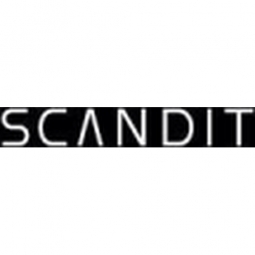Download PDF
Simplifying Order Entry with Smart Device Scanning: A Case Study on Cardinal Health

Technology Category
- Sensors - Barcode Readers
- Sensors - Lidar & Lazer Scanners
Applicable Industries
- Healthcare & Hospitals
- Pharmaceuticals
Applicable Functions
- Logistics & Transportation
- Procurement
Use Cases
- Last Mile Delivery
Services
- Hardware Design & Engineering Services
The Challenge
Cardinal Health, a leading healthcare services company, was facing challenges with their product ordering process for pharmacy customers. The company, which specializes in the wholesale distribution of pharmaceuticals and medical products, was using embedded laser or LED scan engine devices to facilitate the pharmacy product ordering process. However, these devices had scan accuracy rates of around 70 percent, leading to potential errors and increased costs. Cardinal Health attempted to address this issue by leasing purpose-built scanner hardware to their customers, but found this solution to be lacking in speed and overall scan performance. The company then decided to test a more cost-efficient option with consumer device apps.
The Customer
Cardinal Health
About The Customer
Cardinal Health is a leading healthcare services company based in Dublin, Ohio. The company specializes in the wholesale distribution of pharmaceuticals and medical products, serving more than 100,000 locations including pharmacies, hospitals, ambulatory surgery centers, clinical laboratories, and physician offices. They employ 36,000 people worldwide, providing medical products to over 75% of hospitals in the US. Cardinal Health’s pharmacy distribution division caters to the needs of hospitals and pharmacies, enabling online ordering via their Order Express portal for various types of pharmacy products.
The Solution
Cardinal Health decided to replace their dedicated devices with Scandit’s barcode scanner enabled Order Express app. After testing several options, they found Scandit’s solution to be the best fit for their requirements in terms of accuracy, speed, and ease of use. The company launched their Order Express app on iOS and Android devices, which was initially built by a third-party vendor but is now managed by Cardinal’s internal IT team. The app has over 2,300 downloads and approximately 1,500 active users at the time of launch, and the company continues to encourage their customers to use their own smart devices to download the free Order Express app.
Operational Impact
Quantitative Benefit
Related Case Studies.

Case Study
Case Study: Pfizer
Pfizer’s high-performance computing software and systems for worldwide research and development support large-scale data analysis, research projects, clinical analytics, and modeling. Pfizer’s computing services are used across the spectrum of research and development efforts, from the deep biological understanding of disease to the design of safe, efficacious therapeutic agents.

Case Study
Hospital Inventory Management
The hospital supply chain team is responsible for ensuring that the right medical supplies are readily available to clinicians when and where needed, and to do so in the most efficient manner possible. However, many of the systems and processes in use at the cancer center for supply chain management were not best suited to support these goals. Barcoding technology, a commonly used method for inventory management of medical supplies, is labor intensive, time consuming, does not provide real-time visibility into inventory levels and can be prone to error. Consequently, the lack of accurate and real-time visibility into inventory levels across multiple supply rooms in multiple hospital facilities creates additional inefficiency in the system causing over-ordering, hoarding, and wasted supplies. Other sources of waste and cost were also identified as candidates for improvement. Existing systems and processes did not provide adequate security for high-cost inventory within the hospital, which was another driver of cost. A lack of visibility into expiration dates for supplies resulted in supplies being wasted due to past expiry dates. Storage of supplies was also a key consideration given the location of the cancer center’s facilities in a dense urban setting, where space is always at a premium. In order to address the challenges outlined above, the hospital sought a solution that would provide real-time inventory information with high levels of accuracy, reduce the level of manual effort required and enable data driven decision making to ensure that the right supplies were readily available to clinicians in the right location at the right time.

Case Study
Gas Pipeline Monitoring System for Hospitals
This system integrator focuses on providing centralized gas pipeline monitoring systems for hospitals. The service they provide makes it possible for hospitals to reduce both maintenance and labor costs. Since hospitals may not have an existing network suitable for this type of system, GPRS communication provides an easy and ready-to-use solution for remote, distributed monitoring systems System Requirements - GPRS communication - Seamless connection with SCADA software - Simple, front-end control capability - Expandable I/O channels - Combine AI, DI, and DO channels

Case Study
Fusion Middleware Integration on Cloud for Pharma Major
Customer wanted a real-time, seamless, cloud based integration between the existing on premise and cloud based application using SOA technology on Oracle Fusion Middleware Platform, a Contingent Worker Solution to collect, track, manage and report information for on-boarding, maintenance and off-boarding of contingent workers using a streamlined and Integrated business process, and streamlining of integration to the back-end systems and multiple SaaS applications.

Case Study
Driving Digital Transformations for Vitro Diagnostic Medical Devices
Diagnostic devices play a vital role in helping to improve healthcare delivery. In fact, an estimated 60 percent of the world’s medical decisions are made with support from in vitrodiagnostics (IVD) solutions, such as those provided by Roche Diagnostics, an industry leader. As the demand for medical diagnostic services grows rapidly in hospitals and clinics across China, so does the market for IVD solutions. In addition, the typically high cost of these diagnostic devices means that comprehensive post-sales services are needed. Wanteed to improve three portions of thr IVD:1. Remotely monitor and manage IVD devices as fixed assets.2. Optimizing device availability with predictive maintenance.3. Recommending the best IVD solution for a customer’s needs.






